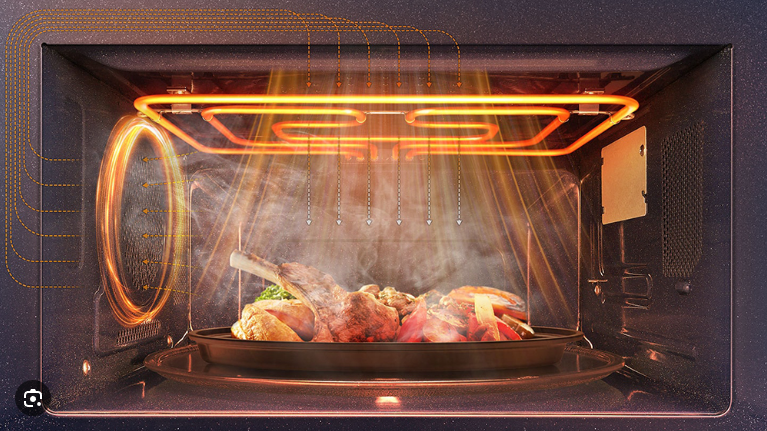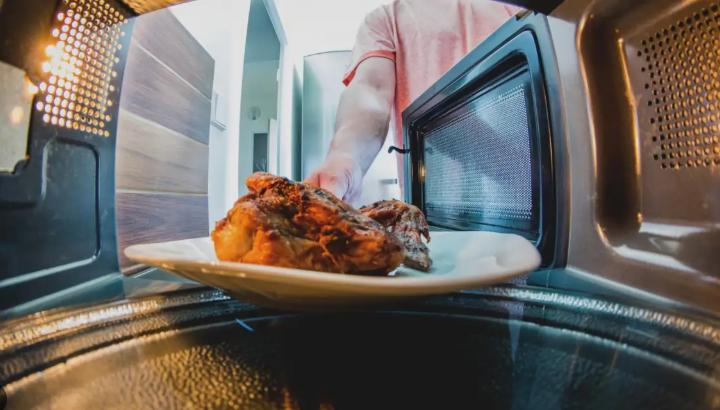If your microwave oven light isn’t working, it can be frustrating, especially when trying to check on your food. Don’t worry, it’s usually a simple fix and you likely won’t need a professional. This guide will walk you through the most common causes and provide step-by-step solutions for how to fix a microwave oven light not working.
Common Reasons Why Your Microwave Light is Out
There are several reasons why your microwave oven light might be out. Understanding the potential culprits can help you pinpoint the problem quickly and efficiently.
- Burnt-out bulb: This is the most common culprit. Microwave oven bulbs have a limited lifespan and will eventually burn out, just like any other light bulb.
- Faulty door switch: The door switches control various functions, including the light. A malfunctioning switch can prevent the light from turning on.
- Loose wiring: Over time, the wiring connecting the light socket can become loose or disconnected, disrupting the power supply.
- Control board issues (less common): In rare cases, a faulty control board can be the underlying cause of a non-working light. This is a more complex issue and may require professional repair.
Troubleshooting a Microwave Oven Light Not Working
Before you start, always unplug your microwave oven from the power outlet. Safety first! Now, let’s get to troubleshooting.
- Check the bulb: Carefully remove the old bulb (refer to your microwave’s manual for specific instructions). Visually inspect it for a broken filament or blackened glass. Try replacing it with a new microwave-safe bulb of the same wattage. Many hardware stores carry these.
- Inspect the door switches: Microwave ovens have multiple door switches that must be engaged for the light and microwave to function. Carefully examine the switches for any signs of damage or debris. Gently press each switch to ensure they click and feel responsive. If a switch feels sticky or unresponsive, it may need replacing.
- Examine the wiring: With the microwave unplugged, carefully inspect the wiring connected to the light socket. Look for any loose or disconnected wires. If you find any, carefully reconnect them. If the wires appear damaged, you might need to replace the wiring harness.
- Test the new bulb: After replacing the bulb or reconnecting any loose wires, plug the microwave back in and test the light. If it still doesn’t work, it’s time to consider more complex issues.

Step-by-step guide on how to fix a microwave oven light not working by replacing the burnt-out bulb.
When to Call a Professional for Microwave Oven Light Repair
If you’ve tried the above steps and your microwave light still isn’t working, it’s best to consult a qualified appliance repair technician. This is especially important if you suspect a problem with the control board, as dealing with electrical components can be dangerous.
“Microwave oven repairs involving the control board or intricate wiring should be handled by professionals. Attempting these repairs yourself can be risky and may cause further damage,” advises Alan Davidson, Certified Appliance Repair Technician at ApplianceAid Inc.
Preventing Future Microwave Light Problems
While some issues are unavoidable, you can take steps to prolong the life of your microwave light and prevent future problems.
- Avoid slamming the door: Slamming the microwave door can put stress on the door switches and wiring, leading to premature failure.
- Use the correct bulb: Always use microwave-safe bulbs with the correct wattage specified in your microwave’s manual. Using the wrong bulb can cause it to burn out quickly or even create a fire hazard.
- Keep the microwave clean: Regularly cleaning your microwave can prevent grease and food particles from accumulating around the light socket and switches, which can interfere with their function.
How to Choose the Right Bulb for Your Microwave Oven
Not all light bulbs are suitable for microwave ovens. Using an incandescent bulb designed for a regular lamp can be dangerous. Always choose a microwave-safe bulb with the correct wattage. This information can usually be found in your microwave’s owner’s manual or on a label inside the microwave.

A person holding the correct microwave-safe light bulb next to a standard incandescent bulb to show the difference.
“Using the correct wattage is crucial for safe operation. A higher wattage bulb can overheat and create a fire hazard,” cautions Maria Sanchez, Home Appliance Safety Expert at SafeHome Appliances.
Conclusion
Fixing a microwave oven light not working is often a straightforward task. By following the troubleshooting steps outlined in this guide, you can often identify and resolve the problem yourself. However, remember to prioritize safety and consult a professional for complex issues like control board problems. With a little know-how, you can keep your microwave light shining bright!
FAQs
- Can I use a regular light bulb in my microwave? No, you should only use microwave-safe bulbs specifically designed for the high temperatures of a Microwave Oven.
- Why does my microwave light flicker? A flickering light can indicate a loose bulb, faulty wiring, or a problem with the door switch.
- How often should I replace my microwave light bulb? Microwave light bulbs typically last for several years. Replace them as needed when they burn out.
- Is it safe to use my microwave if the light isn’t working? While generally safe, a working light helps you monitor your food and avoid overcooking.
- Where can I buy a replacement microwave light bulb? Microwave-safe light bulbs are readily available at most hardware stores and online retailers.
- How do I access the light bulb in my microwave? Consult your microwave’s owner’s manual for specific instructions on accessing the light bulb compartment. It usually involves removing a cover or grill.
- My microwave light works, but the microwave isn’t heating. Is this related? While the light and heating functions are separate, they can sometimes share components like the door switches. If both are malfunctioning, it could indicate a common issue.